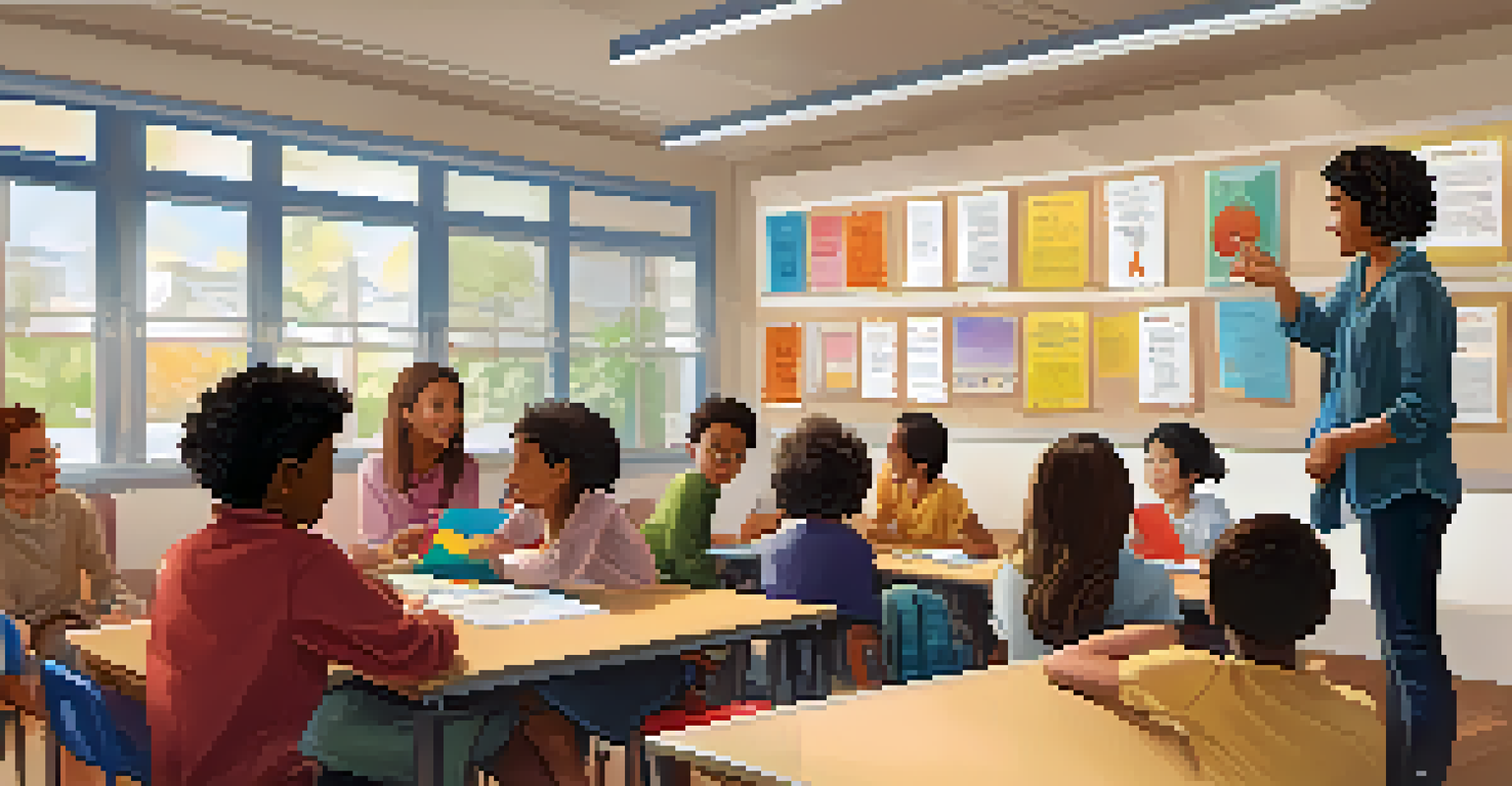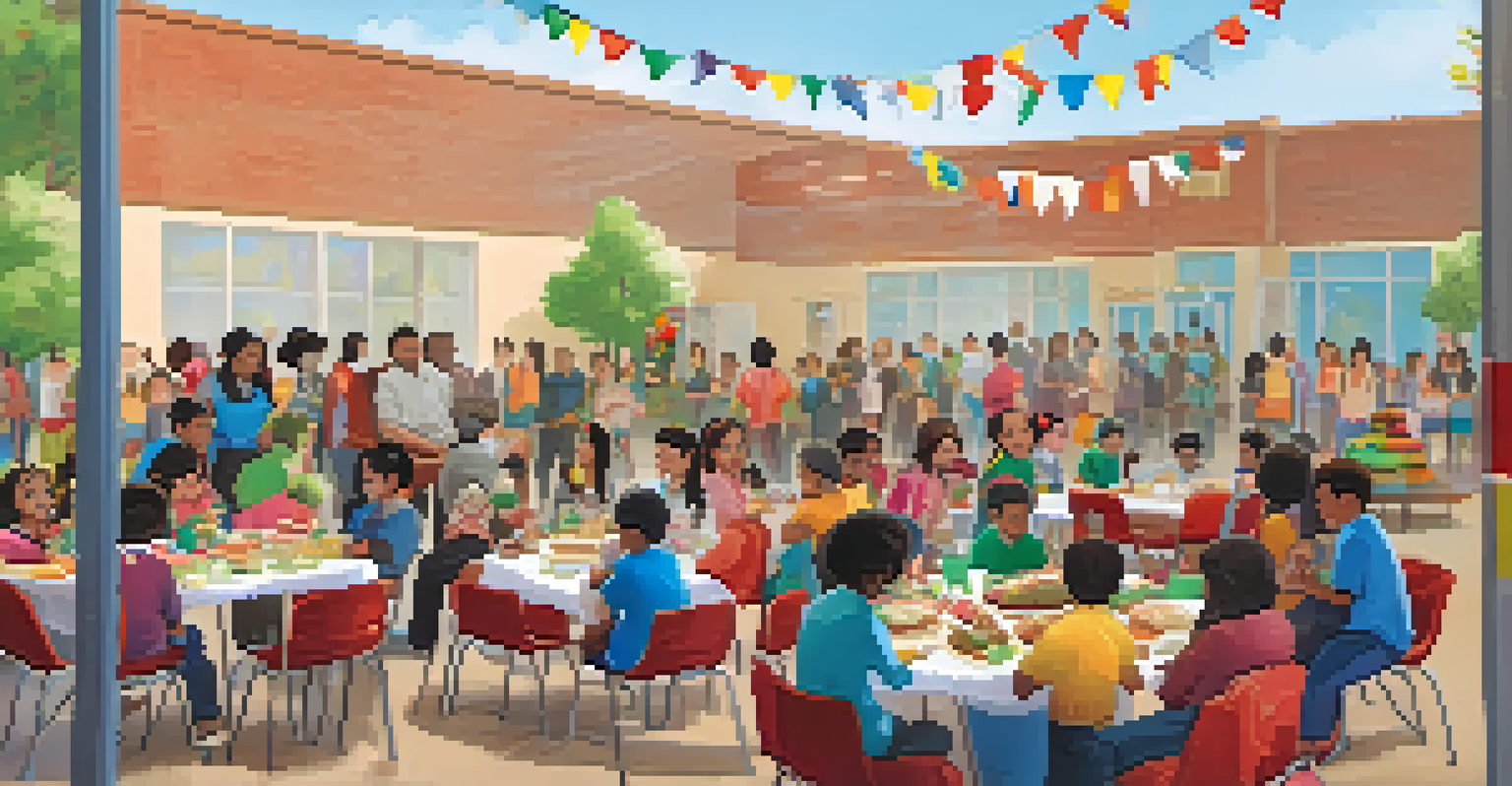Creating Safe Spaces for Cultural Expression in Schools

Understanding the Importance of Safe Spaces in Education
Safe spaces in schools are vital for fostering a sense of belonging among students. They provide environments where individuals can express their cultural identities without fear of judgment or ridicule. By encouraging open dialogue, students can explore diverse perspectives and experiences, leading to greater empathy and understanding.
Education is the most powerful weapon which you can use to change the world.
These spaces also play a crucial role in promoting mental well-being. When students feel safe to share their thoughts and feelings, it can significantly reduce anxiety and stress levels. Schools that prioritize emotional safety are often more conducive to learning, as students are more likely to engage and participate.
Moreover, safe spaces help students develop essential life skills such as communication and conflict resolution. By navigating cultural differences in a supportive setting, they learn to appreciate diversity and build relationships across various backgrounds, which is invaluable in our interconnected world.
Recognizing Diverse Cultural Expressions
Cultural expression comes in many forms, from art and music to language and rituals. Recognizing this diversity is essential for creating inclusive environments in schools. Understanding and valuing different cultural expressions not only enriches the educational experience but also empowers students to take pride in their heritage.

One way to celebrate cultural diversity is through events like cultural fairs or talent shows. These activities allow students to showcase their unique backgrounds and encourage others to participate and learn. Such engagements can break down barriers and foster appreciation among peers.
Safe Spaces Foster Belonging
Safe spaces in schools create environments where students feel comfortable expressing their identities, leading to greater empathy and connection.
Additionally, integrating multicultural perspectives into the curriculum can help students see the importance of diverse expressions. When lessons incorporate various cultural narratives, students are more likely to feel represented and engaged, enhancing their overall school experience.
Creating Guidelines for Respectful Interaction
Establishing clear guidelines for respectful interaction is crucial in safe spaces. These guidelines should emphasize the importance of listening, empathy, and open-mindedness. When students understand the expectations for respectful dialogue, it sets a positive tone for discussions surrounding cultural differences.
Diversity is not about how we differ. Diversity is about embracing one another's uniqueness.
Schools can facilitate workshops or training sessions to help students understand these guidelines better. Role-playing and group activities can provide practical experience in handling sensitive topics. This proactive approach encourages students to practice respectful communication in real-life situations.
Furthermore, having faculty and staff model these behaviors reinforces the importance of respectful interaction. When educators demonstrate active listening and empathy, students are more likely to mirror these behaviors in their own interactions.
Incorporating Cultural Education into the Curriculum
Integrating cultural education into the curriculum is a powerful way to promote understanding and respect. Subjects like history, literature, and the arts can provide students with insights into different cultures and their contributions to society. This holistic approach fosters an appreciation for diversity beyond mere acknowledgment.
Teachers can utilize diverse resources, including books, films, and guest speakers, to enrich their lessons. By exposing students to various cultural narratives, they gain a broader perspective on the world around them. This exposure can spark curiosity and encourage students to explore cultural topics further.
Cultural Education Enhances Learning
Integrating cultural education into the curriculum helps students appreciate diversity, dismantling stereotypes and fostering healthier interactions.
Moreover, incorporating cultural education can help dismantle stereotypes and biases. When students learn about different cultures from a place of respect and curiosity, they are less likely to harbor misconceptions, paving the way for healthier interactions.
Empowering Student Voices Through Leadership Opportunities
Empowering student voices is essential for creating safe spaces. Schools can provide leadership opportunities for students to express their cultural identities and advocate for their communities. This could include forming cultural clubs or committees that focus on promoting awareness and appreciation of various cultures.
By giving students a platform to share their thoughts and experiences, schools validate their perspectives. When students see their voices reflected in school policies and activities, it enhances their sense of belonging and investment in the school community. They become active participants in shaping their environment.
Furthermore, student-led initiatives can inspire peers to get involved and learn from each other. As students collaborate on projects that celebrate cultural diversity, they foster connections and friendships that transcend cultural boundaries.
Encouraging Parental and Community Involvement
Involving parents and the community is key to creating safe spaces for cultural expression. Schools can foster partnerships with families to encourage their participation in cultural events and discussions. When parents feel welcomed and engaged, it helps create a supportive network for students.
Community involvement can also enrich the educational experience. Local organizations and cultural groups can collaborate with schools to provide resources, workshops, and events. This partnership not only enhances students' learning but also strengthens ties between the school and the community.
Community Involvement is Key
Engaging parents and local organizations in school activities creates a supportive network that enriches students' experiences and cultural expression.
Encouraging open communication between school staff and families can help identify cultural needs and preferences. When schools actively seek input from parents, they demonstrate a commitment to inclusivity and respect for diverse backgrounds.
Evaluating and Adapting Safe Space Initiatives
Regular evaluation of safe space initiatives is crucial for their effectiveness. Schools should seek feedback from students, parents, and staff to identify what works and what needs improvement. This ongoing dialogue ensures that the needs of the school community are met.
Adapting initiatives based on feedback allows schools to remain relevant and responsive. For example, if students express a desire for more cultural events, schools can prioritize planning these activities. This flexibility demonstrates that the school values its community's input and is committed to fostering safe spaces.

Moreover, celebrating successes and sharing stories can motivate others to participate in cultural expression initiatives. Highlighting positive experiences reinforces the importance of safe spaces and encourages continued engagement from the entire school community.